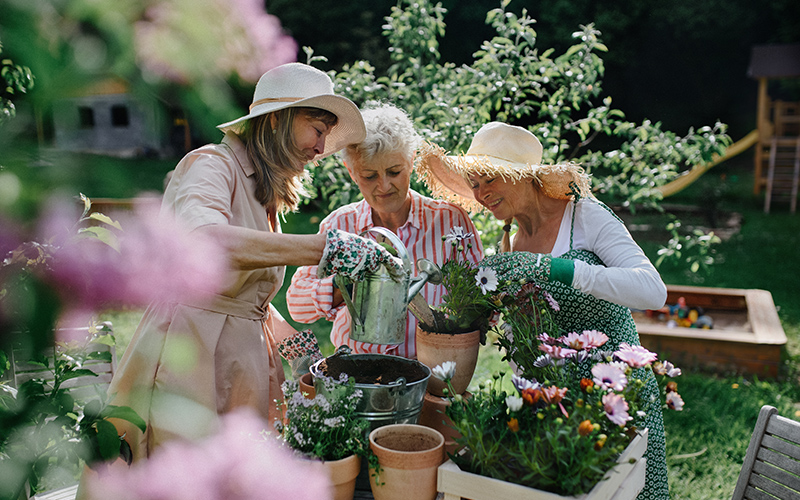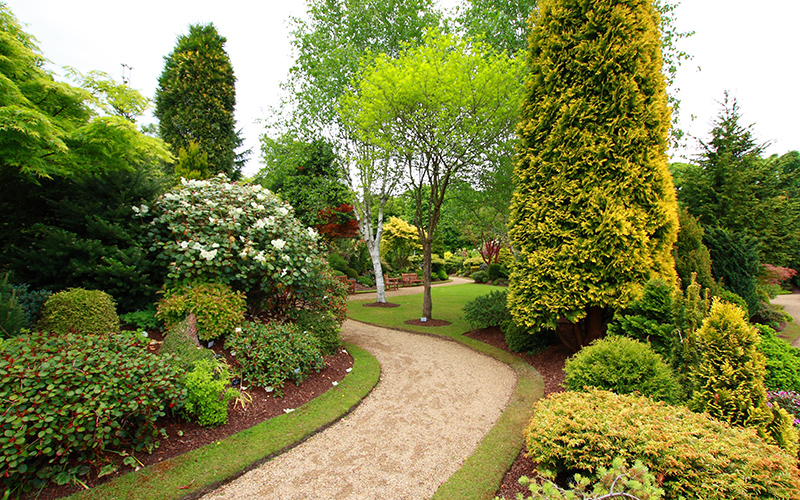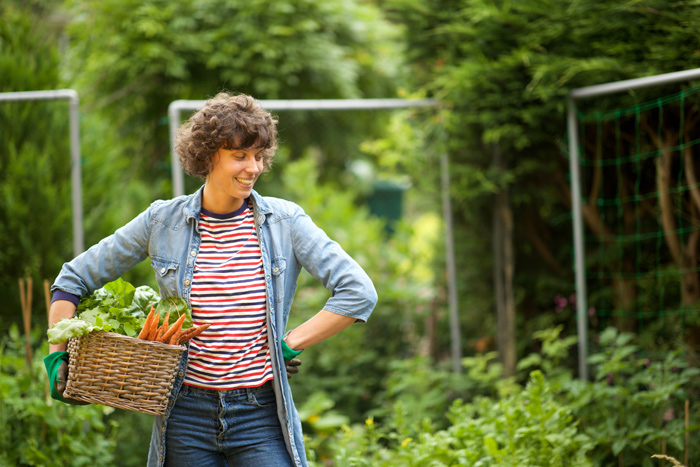A spring gardening club can add a lot of merriment and camaraderie to a neighborhood. Gardening has always been synonymous with springtime, but organizing neighbors to do it as a team can build a strong sense of community. Starting a gardening club is simple, with only a few steps.
What is a Spring Gardening Club?
Simply put, a spring gardening club is a group of people who meet during the spring season to participate in gardening activities. These activities can include, but are not limited to, learning about gardening, growing plants, tending gardens, and harvesting.
Spring is the best time to grow plants, which is why it’s also the best time to start a gardening club. Club members can prepare the soil, plant the seeds, and tend to early-season crops.
Some residents might feel apprehensive about joining a club like this, but they offer a lot of benefits. For one, these clubs give residents an opportunity to learn about the different aspects of gardening. They can learn about plant care and advanced gardening techniques.
Another benefit to starting a spring gardening club is that it provides neighbors with a chance to socialize. Club members can grow plants together all while getting to know one another. They can share their experiences and knowledge with each other, too.
How to Start a Spring Gardening Club
Starting something new can be quite scary, but with the right guidance, it can quickly blossom into something great. If you want to get a spring gardening club going in your community, here are the steps you should follow.
1. Gauge Interest
First, you should gauge interest in a gardening club. A club needs members, and starting one when there aren’t any residents who want to join might be pointless.
To gauge interest, you can talk to your neighbors and ask around. You can conduct surveys and attend meetings to speak to people in person. If you find that there are enough people who are interested in learning about gardening, then you’ve got a pretty good start.
2. Get Permission From the HOA

If your community is managed by a homeowners association, you will likely need approval first. Many HOAs allow residents to form social, athletic, and educational clubs. A spring gardening club would be right up their alley.
Typically, you must ask your HOA board or community manager for permission. You might need to fill out a form and provide details about the club you want to start. The exact process and requirements can vary from one association to another. The best way to find the details is to check your governing documents or ask your HOA board.
3. Recruit Members
Once you get approval from your HOA, it’s time to recruit members. Remember that club members don’t have to be knowledgeable or skilled at gardening already. They can learn about gardening while participating in club activities.
A spring gardening club should be open to everyone in the community. Whether they already have a green thumb or are simply interested in learning, this club should be a safe space for them.
Of course, to recruit members, residents must first know that the club exists. You can advertise the club and its recruitment by handing out flyers, posting on community bulletin boards, and announcing it on social media.
You can even ask the HOA board to spread the word by including it in the newsletter or making an announcement at an open meeting. Some communities run HOA websites or owner portals where the association can post updates and upcoming events. These are all promising avenues for advertising the club and recruiting members.
4. Establish Rules and Schedules
Now that you’ve got club members, it’s time to set a schedule. How often are you going to meet and do club activities? When should you meet? Where should you hold your first meeting?
These are all important questions that you must answer. Some communities have common spaces and facilities that you can use for club meetings. Organizing the club’s first general meeting is a must, as it gives members a chance to get to know each other.
The club meeting is also a good place to set rules and schedules. Although rules help keep things in order, they shouldn’t be too restrictive or stifling, and they should also be in no way discriminatory or oppressive.
5. Select Plot

After establishing the when and how, you must determine the where; meetings at the clubhouse or in a meeting room are great for learning about the theoretical aspects of gardening. But gardening is primarily a hands-on experience, so you need somewhere to flex your green thumbs.
If your community has an available plot of land, even if it’s not too big, you should ask your board for permission to use it. You can start planting there. Some associations even have designated spaces for community gardens.
Of course, if you don’t have a large space, you can simply get together and plant in pots. Potted plants are a great introduction to gardening, especially if your club consists mostly of beginners. A club member or two may even volunteer their yard or garden for the activity.
6. Determine Plants
The next step is to pick out the plants you want to grow. You can focus on vegetables, fruits, flowers, or even a combination of all three. Common spring flowers include primrose, snowdrops, crocus, daffodils, hyacinths, and tulips. For vegetables, radishes, spinach, carrots, and lettuce are good.
It’s best to tailor the type of plants to the skill level of the club members. Some plants are trickier to grow than others, so if you have a club full of amateurs, starting with easier plants is a good idea.
7. Get Gardening

Now that you’ve got everything planned out, you can get gardening. Make sure to learn and grow together as a group. You can attend gardening classes or watch videos online. You can even talk to local florists or farmers and ask an expert to come in for an educational session.
As with anything, there might be setbacks. Flowers may not bloom, and vegetables may not grow as expected. This is quite common, especially for beginners. It’s best to manage your expectations and remember to enjoy the process.
A Great Spring Activity
A spring gardening club is a great way to unite people with common interests. Starting one doesn’t have to be an uphill battle. You can get one going in your community with the right resources and preparation.
RELATED ARTICLES:
- From Farm To Table: Easy Ways To Support Local Farmers This Spring
- Spring Yard Sale For Your HOA Community: Why Have One?
- Organic Mulch vs Inorganic Mulch: What’s Best For Your Garden?




